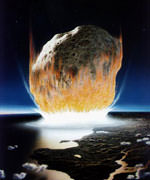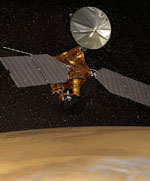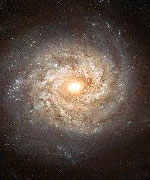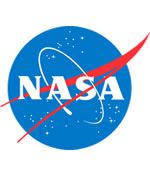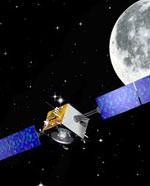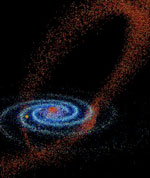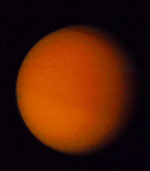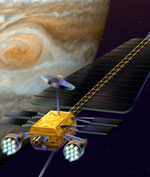
Image credit: NASA
Boeing has picked Dr. Joe Mills to lead their research into the Jupiter Icy Moons Orbiter program for NASA. This ambitious spacecraft will use a nuclear reactor to power an ion engine – it will be so powerful and efficient that it will be able to put itself into orbit around the various moons of Jupiter. The initial research phase is only a $6 million contract to investigate various technology options for the reactor, ion engine, and power conversion. NASA will choose a primary contractor for the mission in 2004.
Boeing [NYSE: BA] has selected Dr. Joe Mills to lead the company?s effort on the Jupiter Icy Moons Orbiter (JIMO) program, part of a NASA initiative to develop nuclear power and electric propulsion technologies to revolutionize space exploration.
Mills and his team will explore technology options for building the first spacecraft that would use nuclear electric propulsion. Boeing is one of three companies exploring technology options (called a Phase A study contract) for JIMO.
Mills previously headed the International Space Station (ISS) program for Boeing NASA Systems. The company is NASA?s prime contractor for the ISS and is responsible for design, construction, integration and operation of the orbital outpost.
?JIMO, like the International Space Station, is an exciting and groundbreaking mission,? said Mills, Boeing JIMO vice president and program manager. ?I?m looking forward to further challenges as we chart the course of space exploration in the 21st century.?
Mills will be replaced as the Boeing ISS vice president and program manager by John Elbon, who is the Boeing Checkout, Assembly and Payload Processing Services (CAPPS) manager at Kennedy Space Center, Fla.
Mills is an internationally known expert in the nuclear safety field with nearly 40 years experience in the aerospace industry. He received a bachelor of science degree in engineering in 1967, a master of science in nuclear engineering in 1969 and a doctorate in nuclear engineering in 1972, all from the University of California, Los Angeles.
Prior to joining the ISS program, Mills spent 20 years in a variety of project and program management positions with Atomics International, a part of Boeing Rocketdyne Propulsion and Power. From 1987 through 1994, he served as program manager to develop space nuclear power for key military and civilian missions.
Mills devoted his early career to nuclear power systems development. He also specialized in the nuclear safety field of liquid metal fast breeder reactors. He also published numerous papers on nuclear power systems and nuclear power safety.
The JIMO Phase A contract is valued at $6 million, with a $5 million option for further work, and runs through fall 2003. Led in this phase by Boeing Phantom Works, the company?s advanced R&D unit, the JIMO team will study technology options for the reactor, power conversion, electric propulsion and other subsystems of the JIMO spacecraft meant to explore the Jovian moons of Ganymede, Callisto and Europa.
NASA currently plans to select an industry prime contractor in fall 2004 to work with the Jet Propulsion Laboratory (JPL) in Pasadena, Calif., to develop, launch and operate the spacecraft.
Mills is responsible for successful execution of the Phase A trade and concept design study, as well as securing the contract to develop, build and support JPL in operation of the spacecraft. Mills leads the team from the Boeing office in Pasadena, Calif.
Mills reports to Mike Mott, NASA Systems vice president and general manager and Ron Prosser, vice president and general manager for Phantom Works Integrated Defense Advanced Systems.
Original Source: Boeing News Release

